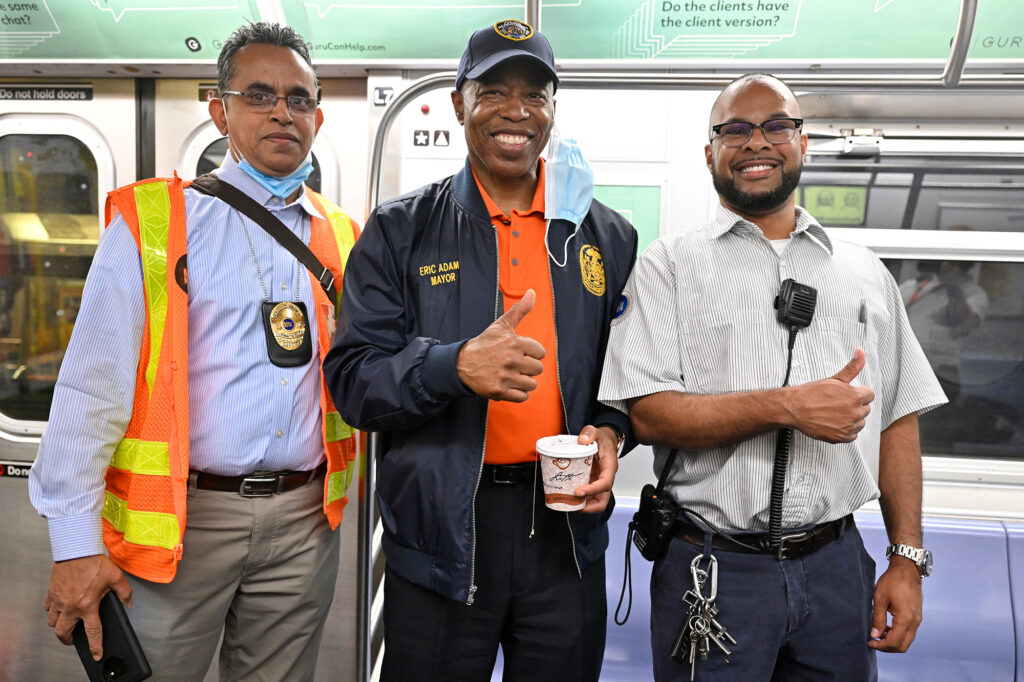At the halfway mark of Mayor Eric Adams’ first year, the affluent white people who didn’t vote for him — and during the campaign minimized the crime fears on which Adams won — are pronouncing Adams a failure. He’s not, but he’s got to start owning his modest successes. Exhibit A is subway crime — on which Adams stepped on his progress last week even as he insulted half New York’s population.
“We’ve got to … put in place a massive campaign on how to be a safe passenger,” the mayor said, fresh off a three-hour nighttime subway tour with The Post. The mayor’s evidence was supposedly irresponsible female behavior. At Union Square, just after 10 p.
m. , the mayor pointed out “two young ladies, standing by themselves,” looking at their phones. “They should not be here,” he said.
“They should be standing by … the help button. ” The mayor fretted whether “this time of night” would turn into “habit” — “1 in the morning when they’re coming from the party. ” He resolved to teach the female people “during the late hours” to stand in the “conductor’s position,” across from “zebra stripes near the ceiling on a bar.
” What? What happened to the late-night mayor? A 10 p. m. summer night is hardly late; 1 a.
m. on a Manhattan subway platform is hardly late. A thriving nightlife is not meek, paranoid women finding the zebra stripes and then standing there with their fingers on the help button, ready to press it if a man wanders over.
As George Kelling, the criminologist who co-invented New York’s 1990s subway-policing regime, told me in 2016, he was glad , by then , to see women by themselves because it showed how safe they felt — and were. The ’80s-era “coping” mechanisms Adams suggests are not a sign of success but of failure. Plus, they don’t work.
Michelle Go wasn’t on an isolated nighttime platform when she was pushed to her death in January; she was in midmorning Times Square. Last year, Than Than Htwe had a male escort, her son, when a stranger pulled her down the stairs at a downtown subway station, killing her. Women (and men and everyone else) are safe when the subways are safe.
A “How to be a safe passenger” campaign will scare everyone more. Ironically, Adams could have run with good — or not-so-bad — subway news, rather than proposing this ridiculous campaign. According to transit-police figures out last week, people riding or working on the rails this May suffered six fewer violent felonies than they did last May — 111 instead of 117.
The decline came even as ridership rose — to 2. 8 million people each day in May, compared with 1. 9 million last May.
No, we are nowhere close to pre-COVID normal. We’re still 52% above that level. And a month’s positive trend may not last.
Still, it is something to have a month in which things get better, rather than worse, underground. Indeed, through April, every month this year had seen worse subway crime, compared to last year. As Adams could have pointed out, May’s slightly lower subway crime coincided with — guess what? — assertive policing.
In May, police made 829 arrests in the subway, three-quarters more than they made last May, and the first time the number of arrests has come close to pre-COVID levels. Arrests for jumping the turnstile were triple the level of last May and “only” 14% below 2019 levels. As for civil tickets, for things like sleeping across subway seats or first-time fare evasion: In May, they were 47% above 2019 levels.
These interactions are important, even when they don’t result in an arrest: People behaving antisocially in the subway know that police are watching. In a city desperate for good news, Adams ought to take the win, however tenuous — and run with it. The mayor should announce that he’ll deploy even more cops to the subway and that they’ll have even less tolerance for “small” infractions like smoking, to turn a tiny improvement into a big one.
And yes, he ought to think about proposing extra police-academy classes, since his solo-patrol idea underground didn’t work out, creating too much risk for officers — and since officers are retiring in droves. People elected Adams to cut crime — particularly subway crime. Whenever he runs into the slightest hint of success in this task, he should let people know, rather than criticize “young ladies” for not feeling safe.
Their safety is the result he wants. Nicole Gelinas is a contributing editor to the Manhattan Institute’s City Journal. .
From: nypost
URL: https://nypost.com/2022/07/04/eric-adams-wrongheaded-subway-crime-lecture/
